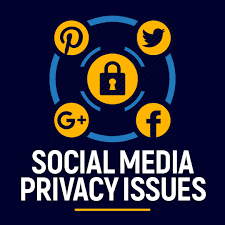Keeping Sane in a Noisy World 2 – Blog Post #492 by Asrar Qureshi
Keeping Sane in a Noisy World 2 – Blog Post #492 by Asrar Qureshi
Dear Colleagues! This is Pharma Veterans Blog Post #492. Pharma Veterans welcomes sharing of knowledge and wisdom by Veterans for the benefit of Community at large. Pharma Veterans Blog is published by Asrar Qureshi on WordPress, the top blog site. Please email to asrar@asrarqureshi.com for publishing your contributions here.
Continued from Previous……
The sources of noise in the social media may be identified as follows.
Abundance & Overflow
The number of new messages, repeats, forwards, multiple forwards and copied content is overwhelming. There are fewer creators of content, while an enormous number keeps forwarding it or copy-pasting it. The addictive senders, which most of the users are, start sending messages early morning, and continue late in the night. We notice messages received at 2.00am and 3.00am. Then there may be a short break, and it starts again from 4.00am. The reason for so much abundance is that it is free to send content on WhatsApp. We have gained enough expertise to share text, pictures, videos, files, documents, scans, and everything else that can be thought of. If the sender has nothing to send, he will just send an emoji. Today’s world is a happening place. COVID, in its one-and-a-half-year tenure so far, has been able to generate content which would be a million times more than the infections. Stay-at-home and Work-from-home were largely spent on social media. Most people felt challenged that they had to respond with at least in equal measure to what they received every day, if not more. The sum up of all this is an unprecedented increase in the use of social media even after resumption of office work in routine.
Email is not part of social media, but this is the greatest noise in office settings. Unnecessary emails are sent and received, and even more unnecessary copies are sent and received.
Diversity and Disregard
Humor, politics, social issues, golden words, inspirational quotes, warning quotes, explicit remarks, religious speeches, quotes from Qur’an and Hadith are quoted and forwarded in the same breath. The senders do not even stop and think that they had shared a graphic quote or clip a second ago which was then followed by a deeply religious content. What should be considered about the sender? What kind of a person is he? What is his sensibility? What is his sensitivity? There is utter disregard for the variety and sanctity of content. There is equal disregard for others’ sensitivities in individual and group messages and posts. The biggest disregard is seen in political posts. Rather it seems that posts that are meant to hurt others are deliberately posted. We do take positions on politics and issues and our positions are determined by who can influence us. We do not have our own independent inquiry into anything, and we are dependent on politicians, political pundits, social pundits, and religious pundits. Despite such obviously flimsy evidence and back up, we stand firmly on acquired positions in an amazing manner. Our convictions are so strong and firm that we can kill and get killed on these, but we never question the basis of our convictions.
Rallying & Instigation
Social media has been extremely successfully used in rallying people for various causes. In the Arab rising that shook the whole North Africa – Tunisia, Algeria, Egypt, Libya – made great use of social media like Twitter in the face of oppression. The same is true for two recent large-scale movements – #MeToo, and #BLM – Black Lives Matter. The sentiment was initiated, intensified, and sustained through social media. The processions were gathered and amassed thanks to social media. On the contrary, social media has also been used to instigate people for the wrong causes. Looting, arson, destruction of property, and even Capitol Hill riots in the US also used social media. The sum up is that social media carries enormous power and may be used effectively for constructive and destructive purposes.
Addictiveness & Compulsiveness
Social media addictiveness is now a recognized problem. The impulse to use it is so strong that it is difficult to deny. You can gauge it from two simple acts: the person picks up phone every few seconds and looks at it; and he/she would frequently write something also. Judging by these two acts, a fair number of people of all ages appear to be addicts.
Compulsion is created when we are expecting a message or a response. Someone puts up for a post on Instagram or Twitter or Facebook and is now eagerly awaiting the responses. If these are positive, compulsion to see more is there, if these are negative, compulsion to keep seeing is even stronger. Many teenagers entangle in this cycle, lose their self-image due to negative feedback and go on the verge of losing life. It could be said that they should stop reading negative messages, but the compulsiveness thus created does not let them stop.
Manners and Etiquettes
Much could be written about the topic of manners. It is an extremely heartbreaking subject, however. The only thing I would say here that the sad loss of manners and etiquettes has increased the noise and made it even more offensive.
To be Continued……
Disclaimer. Most pictures in these blogs are taken from Google Images which does not show anyone’s copyright claim. However, if any such claim is presented, we shall remove the image with suitable regrets.




Comments
Post a Comment